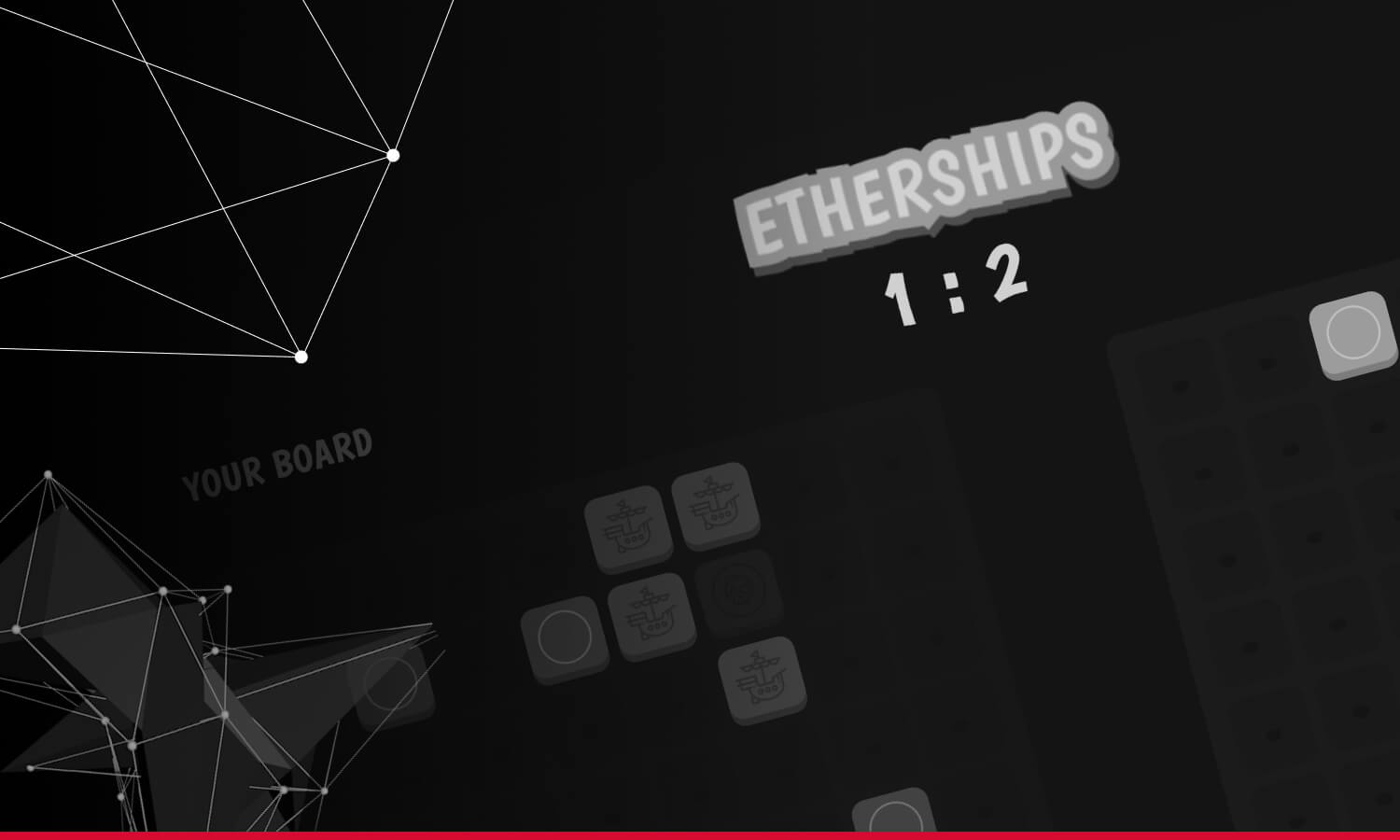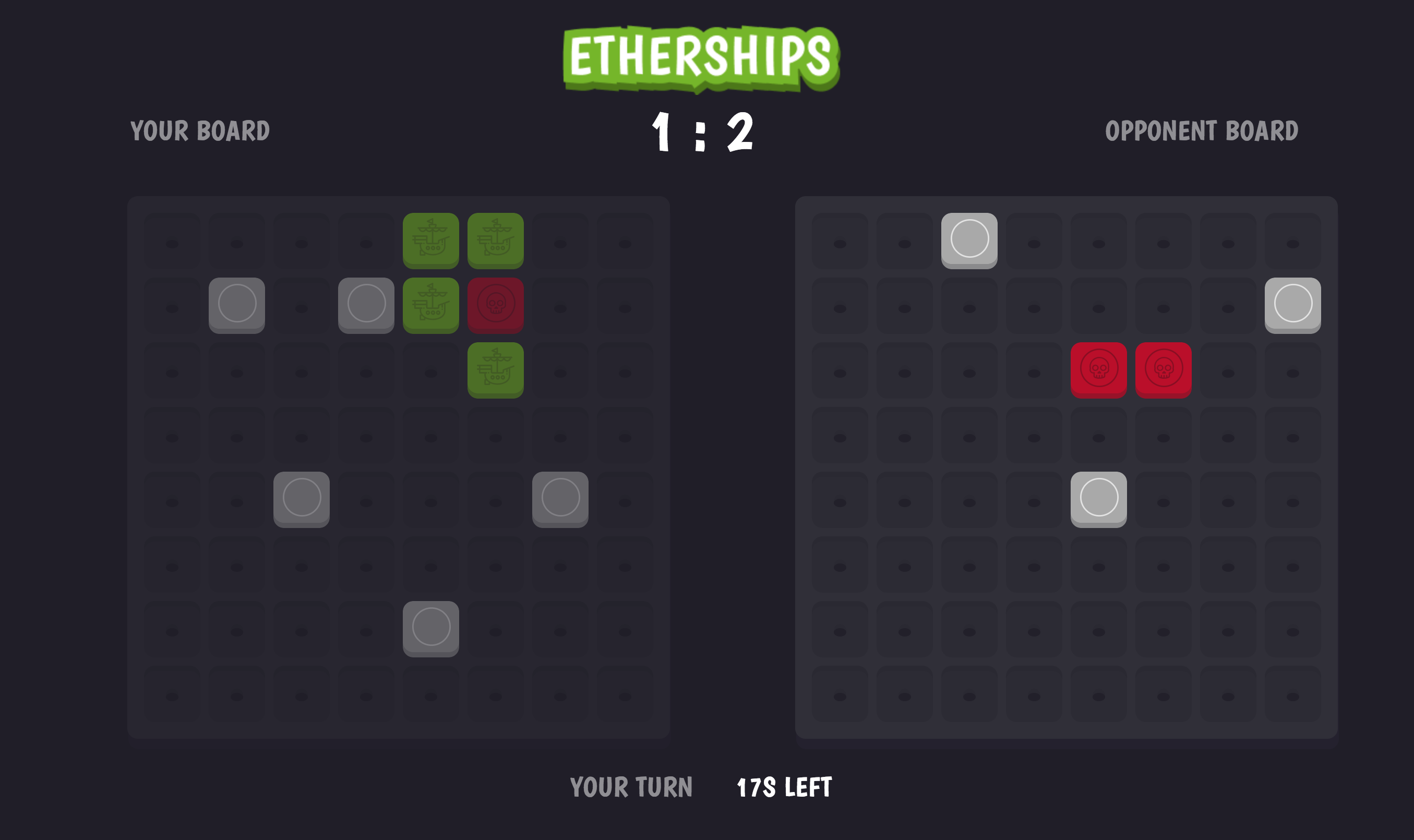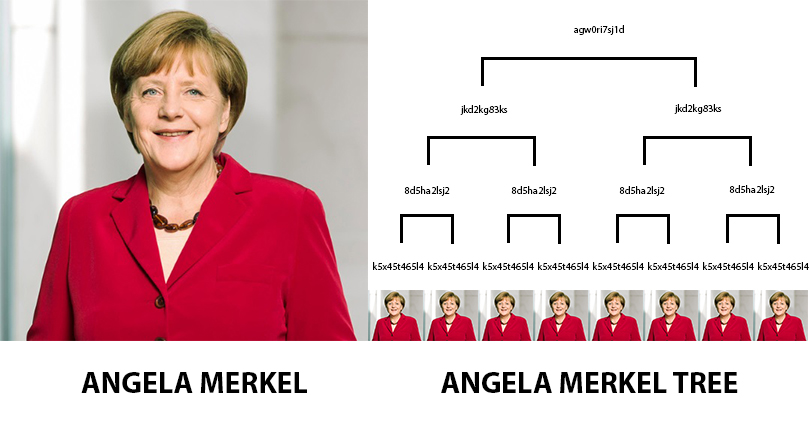Introducing Etherships - Using state channels to scale Ethereum games
What follows is a rather long post describing in detail why we decided to build Etherships, the problems we ran into as well as the solutions that we came up with during this process. If you just want to play the game, feel free to visit the game's website.

What follows is a rather long post describing in detail why we decided to build Etherships, the problems we’ve ran into as well as the solutions that we came up with during this process. If you just want to play the game, feel free to visit game’s website straight away (you might also want some Kovan ETH for this, so our faucet could be helpful).
The problem
There’s a huge expansion of games powered by the Ethereum blockchain going on at the moment and, while the hype is definitely there the actual quality of the games and available solutions is still trying to catch up. One of the main reasons why blockchain gaming still hasn’t truly taken off definitely has to do with scaling issues.
Pretty much everyone in the community is aware of the Ethereum’s currently lacking scaling possibilities and that’s why the foundation team is focused on permanent solutions such as Sharding and Plasma. However, while these solutions are undoubtedly great, they aren’t here yet, so the questions stands – what can we do about it today? And as you may have guessed from the post title, we believe there is a lot of unused potential in state channels to alleviate some of the scaling issues. What state channels can provide is a way for peers to interact in a safe (guaranteed by blockchain security) and decentralized manner (no server involved) while massively reducing the stress on the Ethereum blockchain.
 Etherships match interface
Etherships match interface
How exactly do state channels work?
Before getting into all the technical solutions used in Etherships, let’s do a short introduction to state channels and how they can help us. As already mentioned, the main idea is to minimize the number of necessary transactions and to settle things off-chain, making it possible to only use 2 transactions per game session – one to open and the other to close the channel. More transactions would be needed only in the case that one of the players attempts to cheat.
To better understand the whole deal, let’s try and explain it with an actual use case. One of the best use cases of state channels are payment channels, so here goes one example of exactly that.
Let’s assume that Alice hired Bob to do some work around the house for her. And there’s a lot of work to be done, so they created a list of 20 things – 20 stages of work to go through. As they go through the stages, Alice can pay Bob stage by stage, but the issue here is that they would have to do 20 transactions, meaning that they’ll be paying fees for each of them and unnecessarily congesting the network at the same time.
State channels to the rescue. Instead of doing it the old way, they can lock the funds for the whole job in a contract at the start and then upon completion of each stage Alice can send Bob a signed message releasing part of funds that has been assigned for that stage. You can think of this as sending checks, except Bob can claim his ETH immediately. Now, if it happens that at stage 15 Alice is no longer satisfied with Bob’s work, that’s fine, but she can’t undo any of the previous actions – Bob is still paid for the first 14 stages, but Alice can refuse paying for the remaining 6. This ends their interaction with only two transactions made.
This is a very simplified example of the state channels concept, but try imagining this core idea being applied in other ways, not only for certain amounts of money, but any pieces of data that can have a certain state.
The application potential is huge.
State channels and games
Since we like pushing the limits of blockchain technology with games (you may have come across Cryptage Origins already), we started thinking about applying state channels to enable complex player-vs-player gameplay. Having analyzed classic games like Chess, Tic-Tac-Toe, Go and Battleships, we realised that there are 2 types of games based on their outcome:
- Score based games
- Winner takes it all games
This categorisation is very important from a technical point of view, because score based games can be implemented using a basic payment-channel-like implementation, while the other kind of games that require a winner would need a different dispute method developed. So we picked one of the score based games to work on as a start.
Introducing Etherships
We decided to create something very similar to the classic game of Battleships as a Proof of Concept for our state channels solutions. Besides being easy to play and fun, it actually also imposed a few very interesting technical problems.
The rules of the game are pretty straightforward. The game is played on an 8×8 grid and each player places 5 ships at the positions of his choosing at the start. The game creator chooses the stake in ETH that both of the players put in and each of their ships is then worth a fifth of their stake (or one tenth of the entire pool). At the end of the game a player wins funds assigned to all their ships that survived in addition to those belonging to all the opponent’s ships they have destroyed.
For example, let’s say that our Alice and Bob decided against doing any work and sat down to play a game of Etherships instead. They set the stake at 0.05 ETH, so there was a total of 0.1 ETH in the game, making each of the ships worth 0.01 ETH. Bob came out victorious, sinking all 5 of Alice’s ships, with 2 of his ships surviving, too, meaning he’s got 0.07 ETH in the bag. Alice, on the other hand, hit 3 of Bob’s ships, winning the remaining 0.03 ETH. Good game, guys.
Back to state channels now. How exactly do they help us in this case? Well, we’re glad you asked.
We don’t want to send a transaction to the Ethereum blockchain every time a player makes a guess or sinks a ship during the game. This would be expensive and would make for a terrible user experience with constant MetaMask popups. With state channels, however, we can create a system where users keep signing the current score (the number of ships they hit) and, since both players sign the number of their opponent’s ships they sank as the game progresses, we can use the final signature sent to close the state channel and resolve the whole game even if one player quits.
Of course, things can get more complicated than that. We have checks in place (more on these below) to make sure that neither of the players is lying (e.g. saying that opponent didn’t hit a ship even though they did). In case it comes to that, the honest player can call the dispute method which would prove the opponent’s deceitfulness and name the honest player a complete winner, meaning the latter wins all of the ETH. Moreover, if your opponent is a bad loser and decides not to close a channel (make a move) on their end, you also have a timeout method on your side. If they don’t make a move for a certain amount of time (this is currently set to 60 blocks, which is around 6 minutes on the Kovan testnet), you can claim his stake in the game and walk away as the winner.
In summary, we created a system where players agree on the current state of the game off-chain, as they go along, while punishing the cheaters for any attempt to misuse the game.
All right, now let’s get to the geeky stuff on how this actually works.
The techy details
The first problem we ran into was right at the beginning of the game, when both players place their ships on the board, but have to keep those positions secret from each other. To overcome this, we used a so-called commit-reveal scheme, where each side has all their board’s squares hashed with a random number (nonce) and then sent to the other player. Now whenever a player makes a guess on a certain square, the opponent tells him whether it was hit or miss and reveals a secret nonce so that guesser can determine whether he is telling the truth. This solution is great for another reason: both the players have to submit their hashed boards when the channel is opened, which means that we also have all information needed for an on-chain dispute.
However, there is now a different kind of problem: storage on Ethereum is very expensive, with one memory slot costing 20,000 Gas. And here we are with each square of our hashed board taking 1 memory slot. Since the game has an 8×8 grid, this means that we would be using at least 64 memory slots and 64 slots x 20,000 Gas = too much gas.

Credit for the image goes to reddit user /u/PumpkinFeet
This is where the good old Merkle tree comes to the rescue. We don’t have to upload the whole board state any more, as we can take our hashed game board and create a Merkle tree from it. Once we have the Merkle tree ready, we just need to upload the root node to Ethereum and we can use Merkle proofs in our dispute method. This solution works well because when the game is in progress and your opponent tries to hit one of your ships, as a response to his action you send him a signed merkle path to that node, while also revealing the secret nonce. If the information the opponent sent your way doesn’t “fit” into the merkle tree you can call the dispute method where you send the invalidly signed merkle path as proof.
Therefore, if one player tries to cheat he will get punished by the opponent who will dispute the cheating move. Otherwise, if everything goes well, both players will close the channel in the end and the staked funds will get distributed according to the final score.
Ether.js and signing messages
Besides the challenges faced while building an efficient and bulletproof dispute resolution system, making a decentralized PvP game also means having to deal with peer-to-peer communication and players’ interaction with the smart contracts. Etherships is a web based game and as such it uses MetaMask to communicate with the Ethereum blockchain. While this works great, the problem we faced is that on each turn a player has to send 2 signatures – first, one for the current score and then the second for the merkle path. The way MetaMask works means that a player would be prompted about sending a signature on each and every turn, and that would be a rather poor user experience.
Our solution to this was to generate a new Ethereum account using the Ether.js library which will do all the signing in the background. Then when opening a channel the user specifies which signing address will be used. This way users still rely on MetaMask, which they are accustomed to, in order to open and close the channels, but another one-time address is generated for each game to handle the message signing.
P2P communication with WebRTC
In the spirit of decentralization we also decided not to use a server for communication between users and instead create a direct connection using the WebRTC protocol. WebRTC has been supported by all major browsers for more than a few years now and it seemed to fit the project great. Although, it’s not completely server-less and you still need a so called ICE/TURN server to connect the 2 users, but, after that, all communication is direct.
Moving forward
Etherships may be a simple game, but the idea, technology and solutions behind it are powerful. With the Proof of Concept successfully done, we now plan to extract and generalize relevant code in order to create a state channel framework designed specifically for building decentralized PvP games. This framework will act like a layer of abstraction that covers up all the complicated stuff we talked about above.
We see this as the first step to building an easy way for other creators to use this already known scaling solution in their (D)apps and push the adoption of Ethereum and open blockchains forward.
Etherships is a fully open source game, currently running on the Kovan testnet.
Play Etherships: https://etherships.co
GitHub repo: https://github.com/DecenterApps/MatchChannels/tree/master/etherships
Feel free to leave any comments below, we’d love to hear your thoughts!
